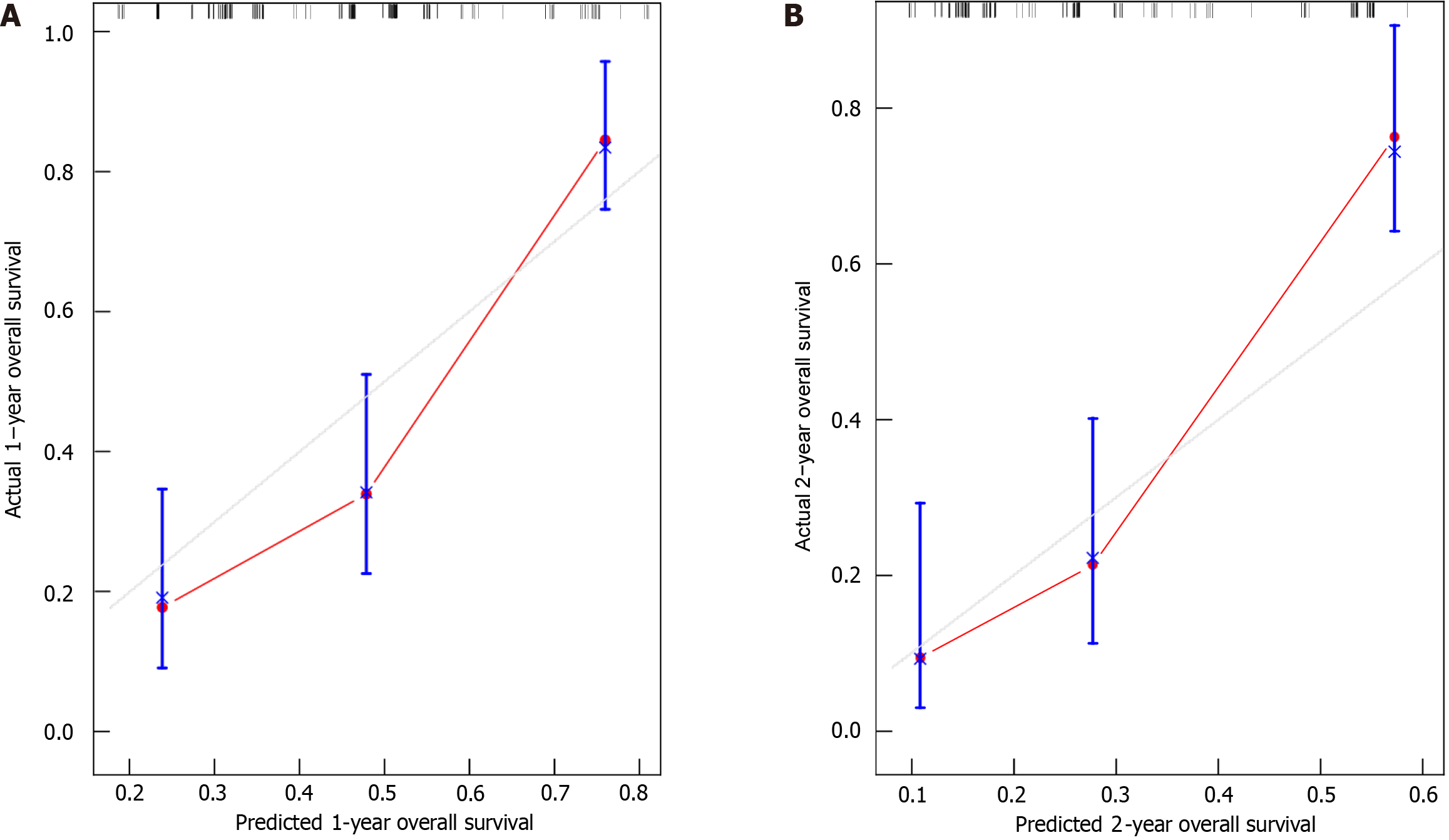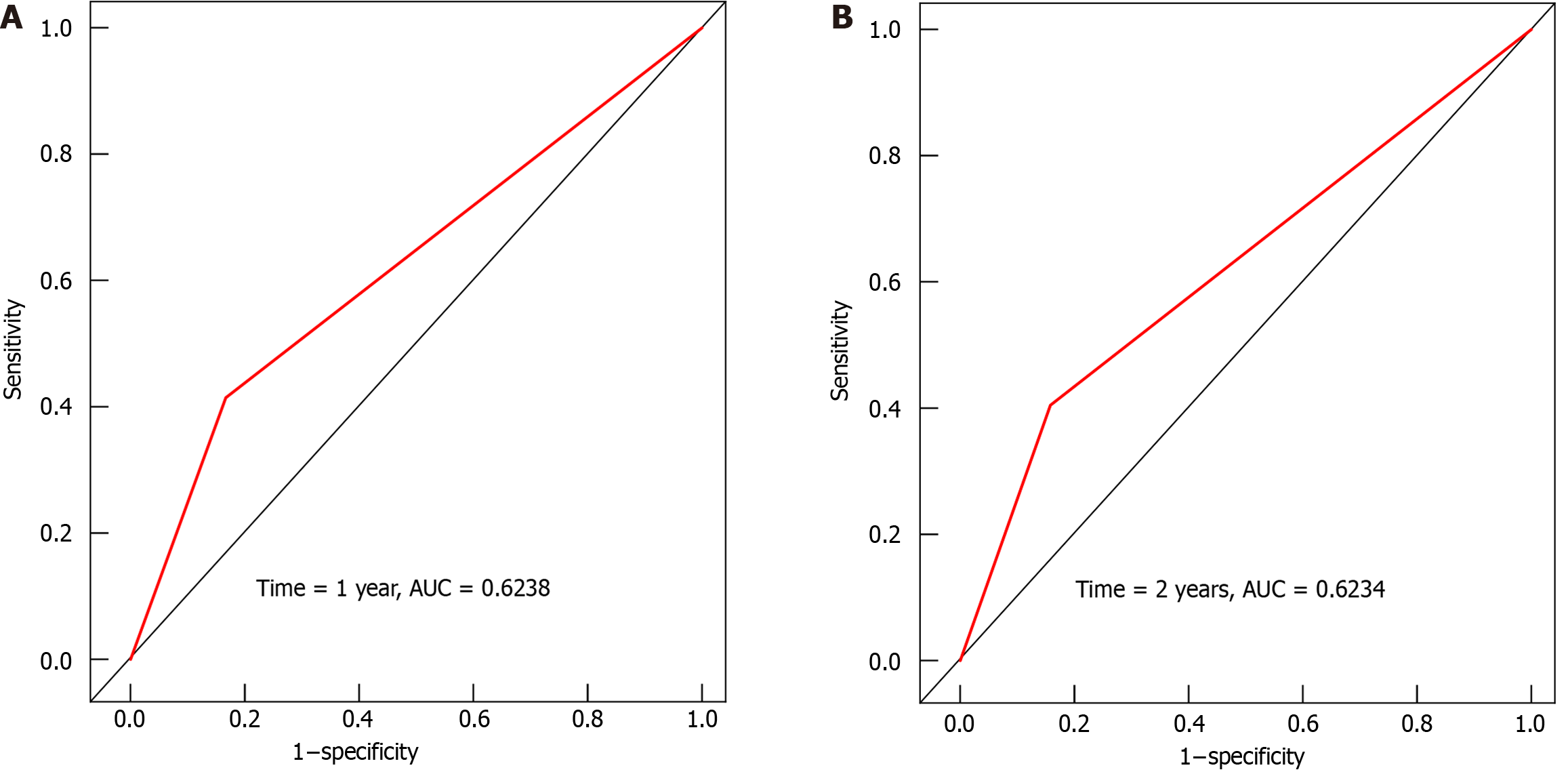Copyright
©The Author(s) 2024.
World J Gastrointest Oncol. Sep 15, 2024; 16(9): 3865-3874
Published online Sep 15, 2024. doi: 10.4251/wjgo.v16.i9.3865
Published online Sep 15, 2024. doi: 10.4251/wjgo.v16.i9.3865
Figure 1 Kaplan-Meier curve for patients with high and low neutrophil-to-lymphocyte ratio, normal and low hemoglobin levels.
A: Kaplan-Meier curve for patients with high and low neutrophil-to-lymphocyte ratio; B: Kaplan-Meier curve for patients with normal and low hemoglobin levels. NLR: Neutrophil-to-lymphocyte ratio.
Figure 2 Nomogram for predicting the 1- and 2-year postoperative survival probabilities of patients with peritoneal metastasis.
Hb: Hemoglobin; NLR: Neutrophil-to-lymphocyte ratio; PCI: Peritoneal cancer index; CA199: Carbohydrate antigen 199.
Figure 3 The 1-year and 2-year calibration plots of the nomogram.
A: 1-year; B: 2-year. While the vertical axes show the actual overall survival rates at 1 and 2 years, the horizontal axes show the nomogram-predicted probabilities of overall survival at those time points. The ideal forecast is indicated by the reference line that runs diagonally across the plot area, from the lower left to the top right corner.
Figure 4 Predictive accuracy of the model was assessed using an receiver operating characteristic curve.
A and B: The area under the receiver operating characteristic curve values for the 1-year (A) and 2-year (B) survival predictions of the nomogram. The larger the area under the receiver operating characteristic curve value, the better the prediction performance of the nomogram model. AUC: Area under the receiver operating characteristic curve.
- Citation: Wu ZJ, Lan B, Luo J, Ameti A, Wang H, Hu QY. Impact of preoperative inflammatory and nutritional markers on the prognosis of patients with peritoneal metastasis of colorectal cancer. World J Gastrointest Oncol 2024; 16(9): 3865-3874
- URL: https://www.wjgnet.com/1948-5204/full/v16/i9/3865.htm
- DOI: https://dx.doi.org/10.4251/wjgo.v16.i9.3865












